The story behind the phone screen
A small mobile phone has a lot to offer.
This communication tool, which was once only used to make phone calls, has become omnipotent and has become the first window for people to connect with the whole world. The mobile phone screen, which undertakes the display function of the mobile phone and the entrance of touch operation, is the "window of the window", and its status is very important.
In this issue, Cathy will talk to you about the secrets behind the screen of the phone. After reading this article, the following questions can be answered:
一. What are the forms of mobile phone screens?
二. How to measure the size of the mobile phone screen?
三. What do the concepts of resolution, PPI, and refresh rate refer to?
四. What are the types of mobile phone screens and what is the technical principle behind them?
一. The shape of the mobile phone screen
Since smartphones have occupied the mainstream market, mobile phones, as entertainment and information centers for fragmented time, need a larger display area, so the screen is getting larger and larger; At the same time, traditional mobile phones have a "forehead" for the earpiece and front camera, and a "chin" for the home button, resulting in the mobile phone being too large and the screen-to-body ratio is difficult to improve.
Later, Apple came up with a way to concentrate a series of devices on the forehead of the mobile phone in the center, and let the screen extend on both sides, which looks like "Qi bangs", so this kind of screen is called "notch screen".
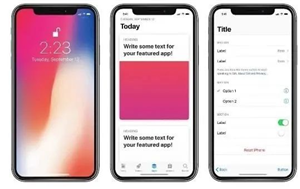
iPhone's iconic "notch screen"
"Bang screen" fired the first shot in the war of mobile phone screen-to-body ratio. After that, various Android phones rushed to follow suit, but soon found it ugly and boring, so various designs with higher screen-to-body ratios appeared.
Waterdrop screen: The front camera is avoided at the top of the screen, and the black background of the camera is connected to the upper bezel, like a crumbling water droplet, hence the name "waterdrop screen".

The "waterdrop screen" of Android phones
Pearl screen: In fact, it is a waterdrop screen, but Huawei feels that the part occupied by the camera is more like a full and round pearl, in order to show the extraordinary temperament, so it is called "pearl screen".

The "pearl screen" of Huawei mobile phones
Cut-out screen: It can be seen from the previous forms that the processing method of the front camera determines the shape of the screen. If you dig a hole in the screen and put a camera on it, it becomes a "cut-out screen".
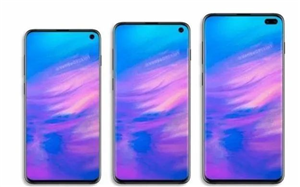
The "cut-out screen" of Android phones
Waterfall screen: The front notch screen, water drop screen and hole digging screen are all dead to the camera at the upper end of the mobile phone without exception, but there are still bezels on both sides of the mobile phone, which is still not shocking enough. So some people thought, then I make a curved surface on the left and right sides, bend the screen down, won't you not be able to see the bezel from the front! The left and right sides of this screen resemble waterfalls, hence the name "waterfall screen".
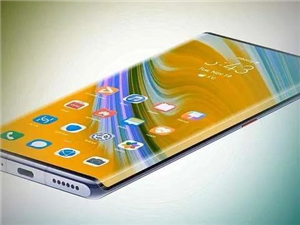
The "waterfall screen" of Android phones
Full screen: The front of the phone is a complete screen, with no notches, no water drops or pearls, and no holes. The full-screen screen looks perfect, but it is achieved by a series of compromises: the front camera usually shrinks inside the body, but when in use, it slowly pops out from the top, and this structure must be precise and durable, so unnecessary complexity is added to the perfect appearance. True fullscreen can also be overlaid with waterfall screens.

The real "full screen" of Android phones
二. T he main parameters of the mobile phone screen
The mobile phone screen is measured in inches, and each inch is equivalent to 2.54 centimeters. We usually say how many inches the mobile phone screen is, but in fact, it is not the side length of the mobile phone, but the length of the diagonal of the screen.

The size of the screen is measured using the length of a diagonal line in inches
With the evolution of mobile phones from feature phones to smartphones, mobile phone screens are getting bigger and bigger. Once Steve Jobs claimed that the golden size of the mobile phone screen was 3.5 inches, but now most flagship phones maintain the screen size of more than 6 inches, and many manufacturers have even expanded the mobile phone screen to 7 inches.
In other words, the screen size is larger, and the image display will inevitably be clearer? This brings in the concept of pixels and resolution.
Pixel: The principle of screen display is actually to divide the effective area into many small grids, each grid only displays one color, which is the smallest element of imaging, so it is called "pixels".

Pixels are small squares on the screen, each of which displays a color
Resolution: How many pixels the screen has in the two directions of length and width, which is called resolution, and is generally expressed in AxB. The higher the resolution, the smaller the area of each pixel, and the smoother and more detailed the display.

Common display screen resolution definitions
For example, the iPhone X has a screen size of 5.8 inches and a resolution of 1125x2436, which means that the phone has 1125 pixels in width and 2436 pixels in length.
PPI: Different mobile phone screens have different sizes, and the natural resolution is different, so how to intuitively represent the pixel density of the mobile phone screen, that is, the clarity?
The answer is very simple, no matter how big your screen area is, I will give the number of pixels converted into a unit area, and then the standard is unified, can you compare with each other?
In fact, because the screen size is expressed in inches, the industry standard is the number of pixels per inch of the screen, which is called PPI (Pixels Per Inch), which can also be called pixel density.
The PPI is calculated as follows: using the Pythagorean theorem, the number of pixels in the diagonal direction is calculated from the number of pixels in the horizontal and vertical directions in the resolution, and then divided by the diagonal length (that is, the number of inches of the phone's plane size).
The figure below takes the iPhone 5 as an example, and its PPI can be calculated to be 326. Of course, it is easier and more convenient to get the PPI value by looking at the product description.
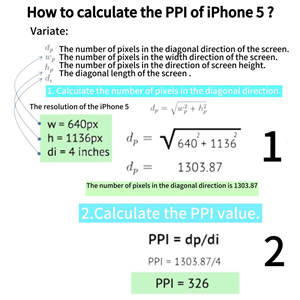
PPI calculation example (iPhone 5)
With a measurement method, how much PPI should be used in the mobile phone screen? Our expectation, of course, is that the image seen by the eye is clear and smooth, with no pixels at all.
Ten years ago, at the iPhone 4 launch, Steve Jobs said, "When you're holding something 10-12 inches (about 25-30 centimeters) away from you, as long as it reaches the 'magic number' of 300 PPI, your retina can't distinguish pixels." ”
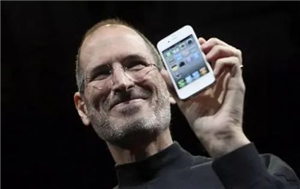
Steve Jobs holds an iPhone 4
This is Apple's original definition of a "Retina screen", and the iPhone 4 screen also has a pixel density of 326ppi.
In fact, Jobs' definition assumes that the person looking at the screen has a vision of 1.0, but in reality many people have much better vision than 1.0, and the distance to see the screen needs to be 25 to 30 centimeters, in fact, many people may get closer. Therefore, the value of 300 PPI is not absolute.
At present, the PPI of mainstream mobile phones is between 300 and 500, Samsung's flagship even exceeds 500, and even Apple's own iPhone X and 11 have reached a PPI of 458.
Let's talk about another parameter that has been hyped up recently: refresh rate.
The refresh rate is the number of times the screen of the mobile phone is refreshed in one second. For example, the common 60Hz refresh rate is that the content displayed on the screen is refreshed 60 times per second.
Why does the content displayed on the screen refresh quickly?
When the object is moving rapidly, the human eye can still retain its image for about 0.1-0.4 seconds after the image seen by the human eye disappears, which is called visual persistence.
Due to the visual persistence effect, if you look at multiple fast-changing pictures, the content of the previous picture is still visually retained, and the next picture quickly comes into view, giving people a continuous animation feeling, which is the principle of video.

How to make a video or animation
Therefore, video playback has a concept of "Frame per second" (FPS), which is how many consecutive images are played per second.
At a frame rate of 16 FPS, the human eye perceives the image as coherent, and higher frame rates result in smoother, more realistic animations. Generally speaking, 25 to 30 FPS is acceptable, but increasing the frame rate to 60 FPS can significantly improve the interactivity and realism.
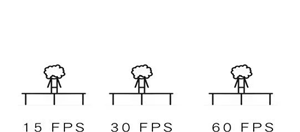
GIFs at different frame rates
Therefore, the refresh rate of the screen must be greater than the frame rate of the video. Otherwise, the video will be played to the next frame, and the screen has not yet refreshed the display, and the user experience will naturally be bad if it stays on the content of the previous frame.
At present, the vast majority of video frame rates are less than 60FPS, so the refresh rate of the mobile phone screen should not be lower than 60Hz. Theoretically, the higher the refresh rate, the more delicate and smooth the display and operation of the screen, so many flagship machines currently use a refresh rate of 90Hz or even 120Hz.
三. The technology behind the screen of the mobile phone
If we look at the promotional poster of the mobile phone, we can find that there are various terms about screen materials and technologies: TFT LCD, TFT, IPS, LTPS, OLED, AMOLED, etc., which is dazzling.
What exactly are the differences between screens using these technologies, and what are the advantages and disadvantages?
In fact, the current mainstream mobile phone screen, from the big technical classification, is nothing more than LCD and OLED.
LCD: The full name of Liquid Crystal Display in English is actually the famous liquid crystal display.
OLED: The full name of Organic Light-Emitting Diode in English is translated as organic light-emitting diode, also known as organic laser display.
The three primary colors of light are red, green, and blue, and by mixing these three colors in different proportions, you can get almost all the colors in nature. Therefore, every pixel on the phone screen is also made up of these three color mixtures.

The three primary colors of light and the mixed colors
The figure below is a longitudinal view of each pixel under LCD and OLED technology, which shows the principle of this pixel emitting light.
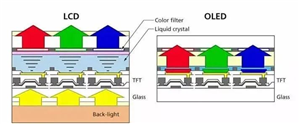
LCD and OLED screen structure
LCD technology, the word "liquid crystal (Liquid Crystal on the left in the picture above)" is conspicuous, but liquid crystals do not emit light, and a backplane composed of LEDs (light-emitting diodes) is required to provide a white light source, which is also called "backlight (back-light in the picture above)".
On the basis of the backlight, each pixel is added with a film of red, green, and blue, and the white light passes through these films to become red, green, and blue.
However, if the intensity of these three types of light is the same, it will become white or gray light when mixed, so it is necessary to flexibly control the intensity of each light in order to mix multiple colors.
At this time, it is the turn of liquid crystal. Liquid crystal has a characteristic of this substance, that is, under the action of the electric field, its molecular arrangement will change, which will affect the permeability to light, and the amount of transmitted light can be adjusted by changing the voltage.
For LCD screens, the liquid crystal layer sandwiched between the backlight and the film can be adjusted by adjusting the input voltage to adjust the light that can be passed, and then through the colored film, you can get three primary colors of different intensities, and after mixing, it is a variety of colors.
So, how do you adjust the input voltage for each pixel?
TFT (Thin film transistor) refers to an array of thin-film transistors on the glass substrate of an LCD panel, which allows each pixel of the LCD to have its own semiconductor switch, so as to achieve "point-to-point" independent and precise control.
Therefore, the mainstream LCD screen is also called TFT-LCD. IPS and LTPS are actually different technical implementations under TFT-LCD, so I will not repeat them here.
LCD has said all that, now it's OLED's turn.
The structure of the OLED screen is much simpler than that of LCD, no backlight, no liquid crystal and color filter film, and the organic material coating inside it is like a small colored bulb, which can emit light when it is energized.
AMOLED: OLED, as we already know, the previous AM is talking about the driving mode of OLED, its full name is Active Matrix, that is, active matrix, which usually uses TFT as a switch to control the current through organic materials to achieve different color displays. All OLEDs currently used in mobile phones are AMOLED, so it can be considered that the two are the same thing.
Super AMOLED: Samsung's improvement of AMOLED, canceling the touch-sensitive panel in the middle, and making the AMOLED sensing layer on the screen, so the control is more sensitive, slimmer, and brighter, and the presentation effect is better in sunlight.
Dynamic AMOLED: It is also an improved AMOLED technology launched by Samsung, which is currently mainly used in high-end phones. This technology transforms the organic materials in the OLED, which is said to allow for a wider dynamic range and more shadow detail when the contrast between light and dark is high.
Essentially, Super AMOLED and Dynamic AMOLED gimmicks are mostly ingredients, and they both belong to AMOLED, and AMOLED is the OLED technology used in mobile phones.
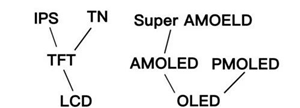
Various subdivided screen technologies under LCD and OLED
Compared with OLED screens, LCD screens have many disadvantages.
1. Unable to display black: Because the liquid crystal layer cannot be completely closed, there will always be some backlight that will pass through, so the LCD cannot display pure black, but can only display dark gray. OLED, on the other hand, can achieve a pure black display by controlling the switch of each pixel.

The night sky under the OLED screen (left) is noticeably deeper
2. Easy light leakage: The backlight of the LCD screen is easy to leak out from the screen and the frame of the mobile phone, forming a light leakage phenomenon, which is very common in the era of rough workmanship of mobile phones, and it is rarely seen at present.

LCD screen light leak
3. Large screen thickness: Due to the complex technology, LCD is limited by the backlight layer and liquid crystal layer, and the screen thickness is much greater than that of OLED. Of course, this thickness is not worth mentioning at all on TV, but in the pursuit of slimness, the pursuit of mobile phones, and the extremely limited internal space in the scene, the thinner screen can be stuffed with more other components to improve the performance of other aspects.
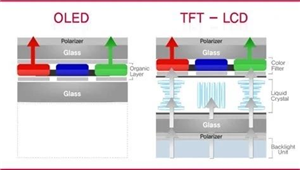
The thickness of the LCD screen is much larger than that of the OLED screen
4. It is difficult to achieve a curved screen: LCD cannot be bent significantly, while OLED can. Therefore, for those mobile phones with curved screens, they can only use OLED screens.

OLED is very suitable for achieving curved screens
5. High power consumption: Due to the backlight of the LCD screen, it must be lit up as a whole when in use, and OLED can control the switch of each pixel separately, so the power consumption of the LCD screen is much greater than that of OLED. In the figure below, the nut R1 and Xiaomi mix2s are both LCD screens, and the battery life is obviously at a disadvantage under long-term video playback.

The LCD screen consumes a lot of energy, and the battery life suffers
6. Long response time: Due to the long response time of the LCD screen, it will produce smearing when the screen slides quickly. And OLED responds quickly, clean and neat without smearing.
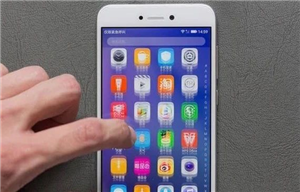
Smearing of LCD screens
Having said so many disadvantages of LCD, is OLED flawless? Of course not, OLED mainly has the problem of screen burning and strobe.
1. Screen burning: Due to the rapid aging speed of the organic materials used in the OLED screen, if there are pixels with a large workload, and some are relatively idle, there will be a problem of inconsistent aging of the whole screen, resulting in deviations in the color display of different areas. This phenomenon is called screen burning.

Burn-in phenomenon of OLED screen
However, under normal use, screen burning is a slow process, and by the time it is clearly felt, three years have passed, and most people should change their mobile phones.
Screen burning is the disadvantage of OLED screen, for LCD, the backlight is lit up, and the aging time of the liquid crystal is longer, so there is basically no problem of screen burning.
2. Strobe: For LCD, to control the brightness of the screen, you can directly adjust the brightness of the backlight. But OLED is more troublesome, you need to turn on and off the screen at high frequency to achieve dimming, you need to turn on the screen more times if you want to brighten it, and turn off the screen more times if you want to dim it.
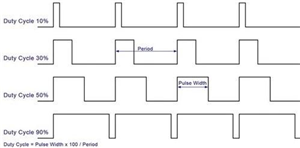
Dimming of the OLED screen: The raised part is open for the screen
Due to the short time it takes to turn on and off the screen each time, it is difficult for the human eye to perceive the change of each switch on and off the screen, but it can feel the average brightness and darkness over a period of time, so that the effect of dimming is realized.
For example, to achieve 50% brightness, you need to turn on the screen half the time, turn off the screen half the time, and turn off the screen for longer at lower brightness, and the screen will flicker and flicker, even to the point that it can be seen by the naked eye: the eyes are uncomfortable.

Strobe at low brightness of OLED screens
This phenomenon of OLED is called strobe, which is also named "hurting the eye screen". In contrast, the LCD screen generously calls itself an "eye protection screen".
Although there are shortcomings, but the flaws are not hidden, at present, OLED screens have entered the mainstream, gradually compressing the living space of LCD screens, which is especially obvious on high-end machines.
In this regard, we can get a glimpse of Apple's configuration.
|
Year Of Release |
iPhone Model
|
Screen
|
|
2017 |
iPhone 8/8 plus |
LCD
|
|
iPhone X |
OLED |
|
|
2018 |
iPhone XR |
LCD
|
|
iPhone Xs/Xs Max |
OLED |
|
|
2019 |
iPhone 11 |
LCD
|
|
iPhone 11 Pro/Pro Max |
OLED |
It can be seen from the above that starting from the X series of notch screens, products with high positioning use OLED screens, while those with low prices use LCD.
Well, that's all for this issue. I believe that you have already understood the main parameters and technologies of the mobile phone screen, and I hope it will be helpful when purchasing a mobile phone in the future.
Company Profile
The story behind the phone screen
Mobile phone screen material difference
Contact: Mr Feng
Phone: +86-17688393944
Tel: +86-13688848901
Email: 104279822@qq.com
Add: Room 701-10, Rujun Building, No. 105 Zhongxing Road, Ma'antang Community, Bantian Street, Longgang District, Shenzhen